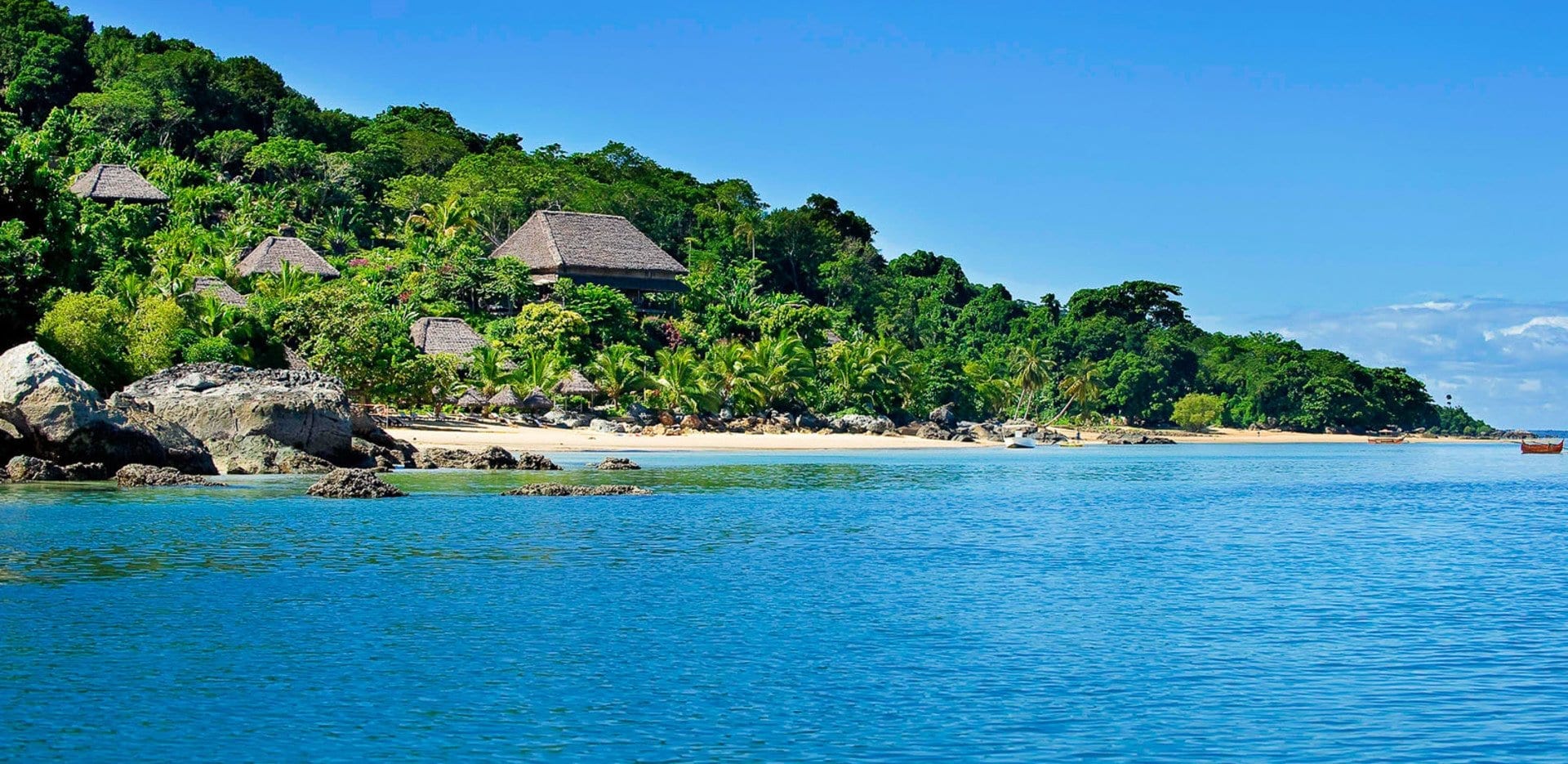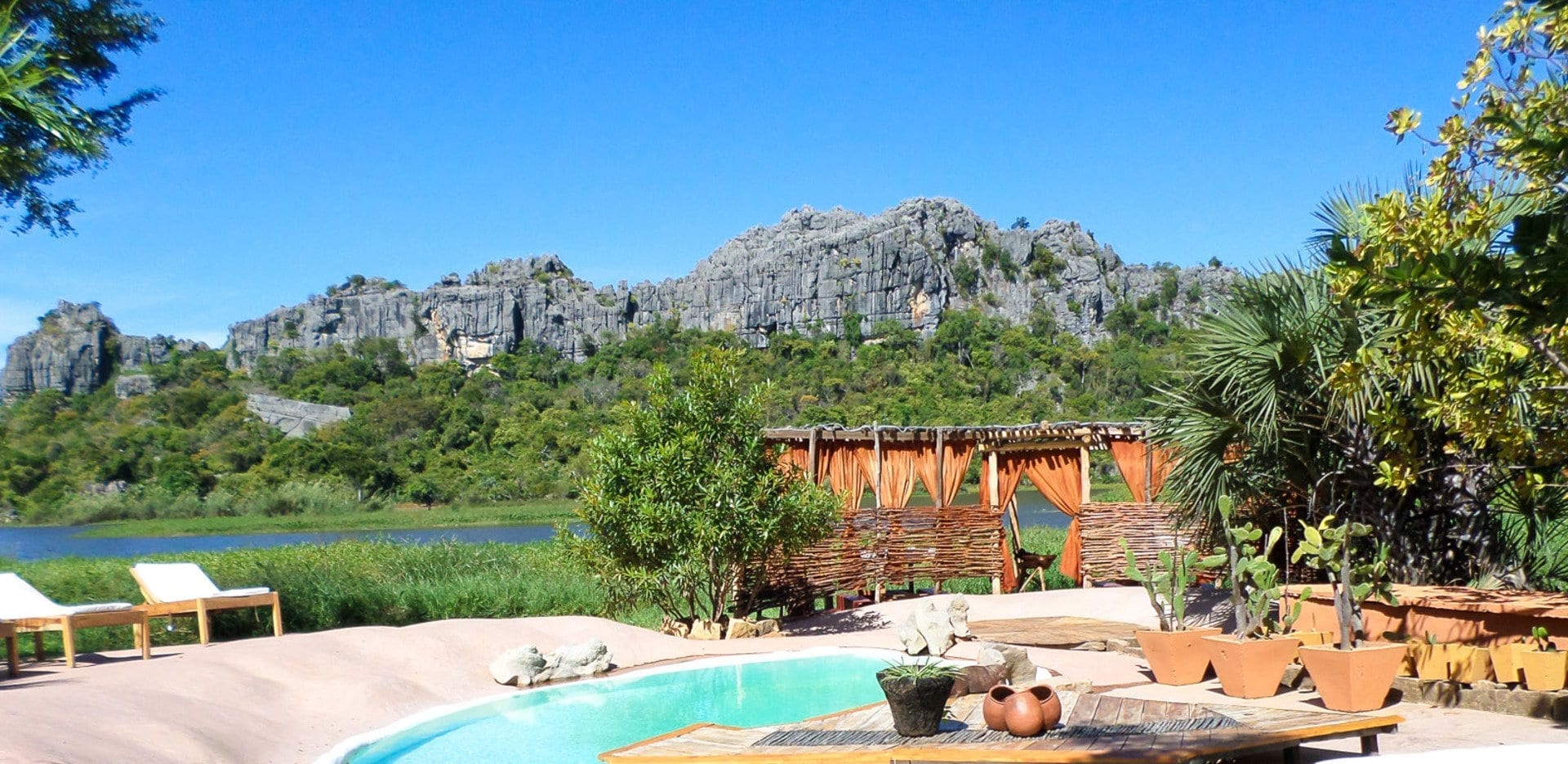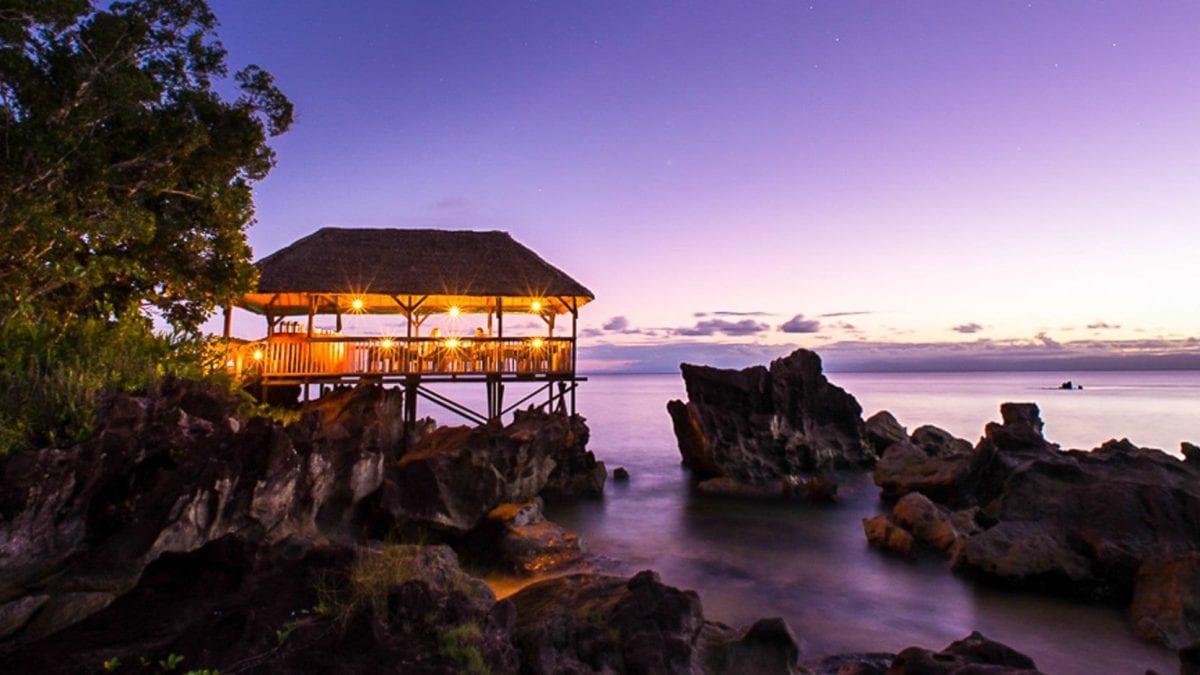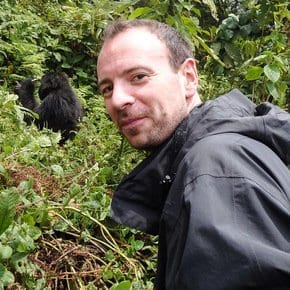
Tsara Komba
August 16, 2021
Iharana Bush Camp
August 16, 2021
Tsara Komba
August 16, 2021
Iharana Bush Camp
August 16, 2021
The spectacular rainforest covered peninsula on Madagascar’s northeast coast forms the backdrop for Masoala Forest Lodge – a luxurious outpost lost in time and nature… A place to relax explore and connect with the natural world in all its primordial splendour.
Masoala Forest Lodge is a secluded lodge accessible only on foot or by sea is nestled between the pristine rainforest and coral rich sea. The Lodge is in an amazingly serene location with just 6 palm-thatched tree-houses elevated on stilted wooden platforms providing uninterrupted canopy views. This eco-friendly lodge supports local communities through employment, purchasing of supplies, handicrafts and sponsoring the local school. A village visit will help you get to know the traditions of this region. The Lodge also regularly hosts yoga retreats. Forest and beach activities are organized through the Lodge and led by their expert guides.
The densely forested Masoala Peninsula contains the largest remaining block of protected rainforest in Madagascar and harbours a wealth of rare and unique species including the Red-Ruffed Lemur, seen only in Masoala. The national park covers 240,000 ha of the peninsula as well as three marine areas. This is the wettest place in Madagascar with an annual rainfall exceeding 500cm. The trails can be quite steep and muddy so it is best to visit this area if you are physically fit. The peninsula can only be conveniently accessed by boat across Antongil Bay. This is a wonderful destination for photographers, with golden sandy beaches and lush rainforests. Combine night and day walks through the primary forest and trips up the river in traditional pirogues with beach activities such as snorkelling and guided sea kayaking for a chance to spot Bottlenose Dolphins and Green Turtles. Birdwatchers will relish the opportunity to see the Helmet and Bernier’s Vangas, Scaly Ground-Roller and other rare endemic birds. The very lucky visitor may even be able see the elusive Aye-Aye, surely Madagascar’s strangest lemur species.




























